Your GUI should have a complete data model. This model can read I18n resource files and regular resource files to populate part of the model. A data model is one or more Java classes that hold the data important to your application while the application is running.
As an example, here is a stopwatch GUI that I created.

And here's the data model class associated with the stopwatch GUI.
import java.util.ArrayList;
import java.util.List;
import javax.swing.table.DefaultTableModel;
public class StopwatchModel {
protected boolean isSplitTime;
protected long startTime;
protected long endTime;
protected DefaultTableModel tableModel;
protected List<Long> splitTimes;
protected String[] columnNames = {"", "Increment", "Cumulative"};
public StopwatchModel() {
this.splitTimes = new ArrayList<Long>();
this.isSplitTime = false;
this.startTime = 0;
this.endTime = 0;
setTableModel();
}
public void resetTimes() {
this.splitTimes.clear();
this.isSplitTime = false;
this.startTime = 0;
this.endTime = 0;
}
public boolean isSplitTime() {
return isSplitTime;
}
public long getStartTime() {
return startTime;
}
public long getEndTime() {
return endTime;
}
public long getLastSplitTime() {
int size = splitTimes.size();
if (size < 1) {
return getStartTime();
} else {
return splitTimes.get(size - 1);
}
}
public long getPenultimateSplitTime() {
int size = splitTimes.size();
if (size < 2) {
return getStartTime();
} else {
return splitTimes.get(size - 2);
}
}
public DefaultTableModel getTableModel() {
return tableModel;
}
public int getTableModelRowCount() {
return tableModel.getRowCount();
}
public void clearTableModel() {
tableModel.setRowCount(0);
}
public int addTableModelRow(long startTime, long previousSplitTime,
long currentSplitTime, int splitCount) {
String[] row = new String[3];
row[0] = "Split " + ++splitCount;
row[1] = formatTime(previousSplitTime, currentSplitTime, false);
row[2] = formatTime(startTime, currentSplitTime, false);
tableModel.addRow(row);
return splitCount;
}
public void setStartTime() {
if (getStartTime() == 0L) {
this.startTime = System.currentTimeMillis();
} else {
long currentTime = System.currentTimeMillis();
int size = splitTimes.size();
if (size > 0) {
long splitTime = splitTimes.get(size - 1);
splitTime = splitTime - getEndTime() + currentTime;
splitTimes.set(size - 1, splitTime);
}
this.startTime = currentTime - getEndTime() + getStartTime();
}
}
protected void setTableModel() {
this.tableModel = new DefaultTableModel();
this.tableModel.addColumn(columnNames[0]);
this.tableModel.addColumn(columnNames[1]);
this.tableModel.addColumn(columnNames[2]);
}
public void setSplitTime() {
this.splitTimes.add(System.currentTimeMillis());
isSplitTime = true;
}
public void setEndTime() {
Long split = System.currentTimeMillis();
if (isSplitTime) {
this.splitTimes.add(split);
}
this.endTime = split;
}
public String formatTime(long startTime, long time, boolean isTenths) {
long elapsedTime = time - startTime;
int seconds = (int) (elapsedTime / 1000L);
int fraction = (int) (elapsedTime - ((long) seconds * 1000L));
fraction = (fraction + 5) / 10;
if (fraction > 99) {
fraction = 0;
}
if (isTenths) {
fraction = (fraction + 5) / 10;
if (fraction > 9) {
fraction = 0;
}
}
int hours = seconds / 3600;
seconds -= hours * 3600;
int minutes = seconds / 60;
seconds -= minutes * 60;
StringBuilder builder = new StringBuilder();
builder.append(hours);
builder.append(":");
if (minutes < 10) builder.append("0");
builder.append(minutes);
builder.append(":");
if (seconds < 10) builder.append("0");
builder.append(seconds);
builder.append(".");
if ((!isTenths) && (fraction < 10)) builder.append("0");
builder.append(fraction);
return builder.toString();
}
}
The model would also contain transient data that gets you from one JPanel to the next JPanel. Transient data is data that only needs to exist for a short period of time, usualy as long as the GUI is active. It doesn't have to be saved after the GUI is exited.
The reason that you use a model / view to build a GUI is separation of concerns. The rest of your application accesses the data model, rather than any GUI components.
